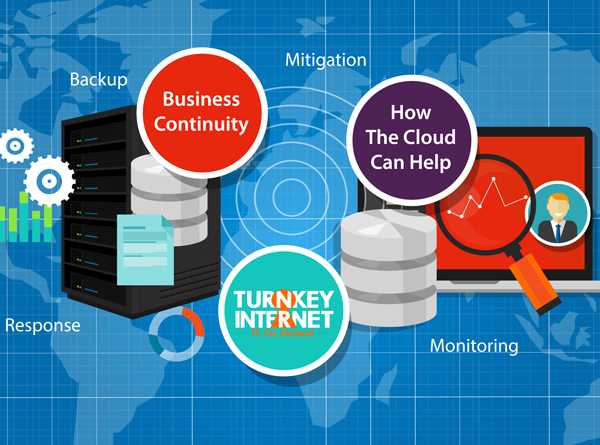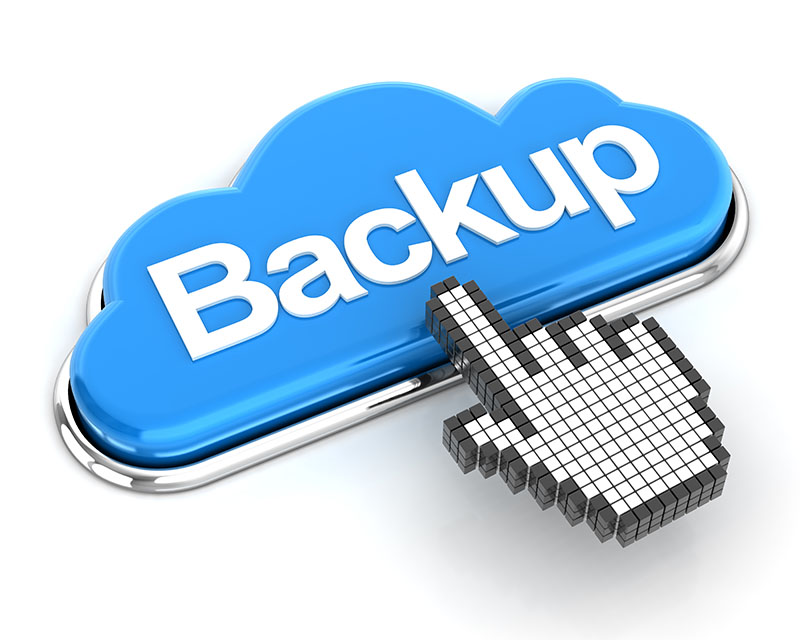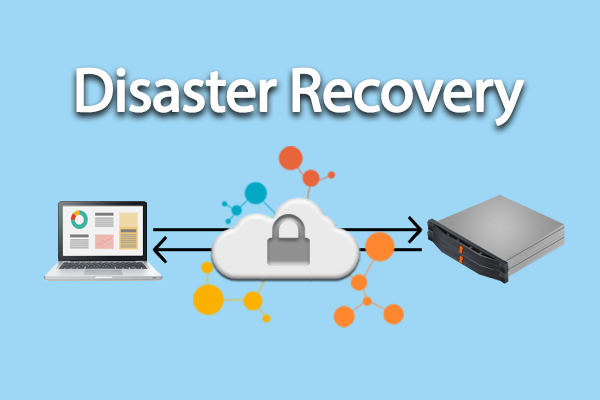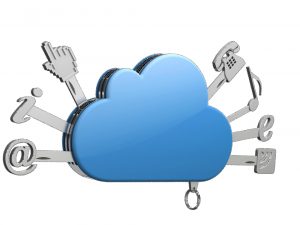Archive for the ‘cloud backup’ tag
Ransomware 2.0 – Are your servers safe? no comments

Are your servers safe from the latest evolution of malware – Ransomware 2.0? You better hope so or else you will pay the price, literally.
What is Ransomware?
The frequency of ransomware attacks has increased dramatically over the past year, with 93% more carried out in the first half of 2021 than in the same period last year, according to Check Points mid-year security report.
Ransomware primarily began through email and malicious ads. However, this new breed of ransomware is targeting network and server-side vulnerabilities, with the ability to self-propagate. It will be able to quickly switch methods to maximize efficiency and will evade detection by limiting CPU usage to refrain from command-and-control actions.
Ransomware 2.0 “will start replicating on its own and demand higher ransoms. You’ll come in Monday morning and 30% of your machines and 50% of your servers will be encrypted. These new ransomware strains will spread faster and self-replicate within organizations before coordinating ransom demands. It is critical that companies take the needed steps to prepare and protect their network as well as their local and cloud-based servers.
How to protect your business from ransomware?
Now you may be wondering “What steps should I take?” Well, we’re glad you asked! The key is in taking a proactive approach to prevent rather than remediate. There are some easy yet vital best practices you should follow to protect yourself.
First and by far the most important, back up your data. Second, consistently keep your software and systems up to date. Third, make sure you are utilizing some form of antivirus and malware protection software on your PCs and servers. Finally, back up YOUR DATA! Yes, we know we said that already, but this step is so critical it’s worth mentioning twice. If you don’t currently have a backup solution, TurnKey Internet has multiple cloud-based disaster recovery and backup solutions to choose from, such as R1Soft Continuous Data Protection.
To learn more consider using these four best practices for backing up your data.
Your primary goal is to protect your users, not just your network. Whether they are on a laptop, tablet, or smartphone, your users need to be protected everywhere. However, it is unreasonable to assume that you will be 100% protected from every threat that exists. New more advanced methods to attack computers and encrypt their files are popping up every day. Therefore, your number one priority should be to back up your data regularly. If that moment comes where you find yourself infected with ransomware, the comfort of knowing your data is backed up, safe, and secure is priceless. However, if you chose not to back up your data… be prepared to pay the price.
Find out how TurnKey Internet can help protect your business against ransomware and other threats, securing you today and tomorrow. Visit www.turnkeyinternet.net/myplan for a FREE consultation!
Follow Us :
Share :
Every Day is World Backup Day no comments

The amount of data collected daily is growing exponentially. For many businesses, data is one of their valuable assets. In some instances, data is the only asset they have. Data backup is crucial for protecting your business’s continuity. World backup day, March 31st is a day to remind ourselves how critical data is in our daily lives. Whether for photos, documents, confidential information, or your business.
Backing up your data is a simple but essential step to protect your business.
Importance of Backup
No matter if your data is personal or business-related, you should think about backing up your data. Backups are crucial for data protection. A regular data backup saves your important files from inevitable data loss situations due to common events such as internal mistakes, theft, cyber-attacks, hardware failures, or natural disasters. Backup saves a significant of resources that you would otherwise need to spend on restoring the lost data.
World Backup Day
On March 31, the world celebrates World Backup Day. No, it’s not an official holiday, but that doesn’t diminish the importance of the day. World Backup Day was created to raise awareness of regular backups for files, data, and other work.
We all have data that is very important to us. This data takes many forms and if we lost it, could greatly affect our businesses. A rewind button doesn’t exist for life, but for data it does. With a backup solution along with full business continuity and disaster recovery plan, you can avoid various threats to your data. Don’t be an April Fool – be prepared and back up your files often, not just on the 31st of March Questioning how to back up data? Consider using these four best practices for backing up your data.
TurnKey Internet Backup Solutions
Turn to TurnKey for the utmost in safety and data protection. TurnKey Internet’s next-generation Cloud Backup technology offers true Business Continuity and peace of mind through cloud-based redundancy that allows you to restore anything, anytime, anywhere
Need help getting your company’s backup and disaster recovery plan up and running? Visit turnkeyinternet.net/myplan to receive a FREE consultation!
Follow Us :Share :
4 Best Practices For Backing Up Your Data 1 comment
 Data corruption, hardware failure and malicious attacks are just a few of the threats that can harm your personal or business files, and if you failed to properly back up your data, you will be out of luck. Taking the right steps when backing up your data will give you peace of mind because you will know that your files are not in danger. No matter if you are trying to safeguard family pictures or business contacts, the following information will help you reach your goals.
Data corruption, hardware failure and malicious attacks are just a few of the threats that can harm your personal or business files, and if you failed to properly back up your data, you will be out of luck. Taking the right steps when backing up your data will give you peace of mind because you will know that your files are not in danger. No matter if you are trying to safeguard family pictures or business contacts, the following information will help you reach your goals.
1. Utilize The Cloud
When protecting your data is your No. 1 goal, you might feel as though creating a local backup is enough, but it’s not. If all of your files are stored on the same server, then you will still lose everything if that server gets destroyed. The good news is that you can combat this problem by utilizing a Cloud Backup solution. This option involves uploading the data that you want to protect to ‘The Cloud’ – a cluster of servers located in a remote, secure data center.
If something happens to your main or local storage server, cloud backups enable you to still have access to the files that you need. Best of all, your data will be available anytime, anywhere, and from nearly any device.
2. Set a Schedule
After learning about the importance of keeping backups, many businesses either dedicate a server to secure their files or rent one. At first, they put in the effort to create backups on a regular basis, but they don’t remain dedicated to the process. As time goes on, they often stop using their backup servers. To avoid that situation, you can determine how often you need to create backups and set a schedule.
When you do so, staying on track will be that much easier. Some people backup their files one time each week, but others do so every night. The number of backups that you want to create will depend on several factors, but the important part is to remain consistent.
3. Set a Retention Limit
Once you have a backup system in place, you want to decide on the amount of time that you will store your data. Many businesses will delete some backups every few months or years, but you might need to keep some records for as long as you can. For example, tax records should be saved for seven years if you don’t want to encounter problems.
Although deciding which files to keep is not always an easy task, prioritizing your data can help. The length of time that you will keep each backup will also depend on the amount of storage space that is available to you. So if your current solutions are not meeting your needs, then it could be time to consider upgrading.
4. Use Encryption
Backing up your data is a smart move, but you also need to protect your files from unauthorized individuals. Criminals try to target servers that have the least amount of protection because they want to access data easily. If you don’t secure your files, then you could become a victim. If you own or manage a business, then you are also putting your customers’ data at risk, which is not acceptable.
When you encrypt your data, you scramble the code in a way that makes it all but impossible to read. Even if someone can obtain your files, they will not be able to do anything with them. Only those authorized with the decryption key will be able to actually view your data.
Don’t make the mistake of ignoring the threats that can destroy your data. If a business loses its clients’ contact information, then that business could fail. Even if a company can recover from data loss, the fallout could have a lasting impact on its reputation. If customers don’t think that a business takes steps to keep their digital information safe, then they will find a company that does.
Looking for the easiest way to protect your data while utilizing all of the best practices mentioned above? Look no further than TurnKey Internet’s next-generation Cloud Backup solutions. What makes us the absolute best Cloud Backup solution on the market is our system was built from the ground up with business users in mind. From encryption so strong that even we can’t see your data, to the most advanced features on the market – like Live Cloud Replication, bare metal recovery and the ability to restore a server, PC or even an entire office of computers, live, in real-time, into a fully functional, cloud-based virtual environment accessible from anywhere over the Internet.
TurnKey Internet’s next-generation Cloud Backup technology offers true Business Continuity and peace of mind through cloud-based redundancy that allows you to restore anything, anytime, anywhere. For more information, visit TurnKeyInternet.net Follow Us : ![]()
![]()
![]()
![]()
![]()
Share : ![]()
![]()
![]()
![]()
![]()
Disaster Recovery – How to Survive When Ransomware Strikes (Infographic) no comments
DON’T GAMBLE – Be prepared when IT disasters strike
Receive a FREE consultation of your company’s Disaster Recovery Plan, visit www.TurnKeyInternet.net/myplan
How Your Business Can Survive a Natural Disaster no comments

Smart business owners know the importance of planning so that they can make projections and understand the direction that their businesses need to take. In addition to traditional business plans, it is vital for companies to plan for disasters in order to protect their businesses. Natural and other disasters can cripple businesses, making it difficult for them to recover. When a disaster happens, it is important that businesses have protected their important data so that they can get back to doing business as soon as possible. Businesses that do not have in-depth Disaster Recovery Plans in place when a major natural disaster happens may not be able to recover from them. Fortunately, the advancement of technology has brought simple-to-implement and disaster-proof data protection to businesses, provided by the Cloud.
Lessons From Nature
Some business owners put off disaster recovery planning, thinking that the likelihood of something happening is minimal. Recent natural events demonstrate the importance of implementing a strong recovery plan, however. Hurricane Harvey flooded Houston with enough water that FEMA has projected it will take years for the city to fully recover. Hurricane Irma carved its own path of destruction through Florida, and Hurricane Maria caused total devastation to Puerto Rico.
While Texas, Florida and Puerto Rico are all in hurricane-prone areas, disasters can strike anywhere. The middle of the country and the South are prone to monster tornados such as the mile-wide tornado that destroyed a third of Joplin, Missouri in 2011, killing 161 people and leveling or gutting thousands of buildings, including one of the city’s two major hospitals. Similarly, the Northeastern states are also not immune from disasters as demonstrated by the ravages of Hurricane Sandy. During the winters, the Northeast and upper Midwest also face risks from crippling blizzards, which can down power lines, cause roof collapses and bring businesses to a grinding halt. The earthquake-prone West faces its own dangers of natural disasters, underscoring the importance to businesses everywhere to plan for the worst that could happen.
A common lesson from all of these disasters is that it is highly important for businesses to have backups of their data and IT infrastructure in the located off-site from their office locations and in the Cloud. Having data and IT infrastructure redundancies in the Cloud can protect a business from falling victim to power outages and other storm-related problems. Cloud technology allows businesses to store their data, servers, even their entire IT infrastructure inside a data center, with the ability to access their data as needed or to recover it quickly if disasters strike. This type of cloud solution is known as Colocation. Another cloud solution that data centers offer for businesses is Disaster Recovery as a Service or DRaaS.
DRaaS
With a DRaaS solution, businesses do not have to maintain and invest in their own remote hardware or servers. DRaaS solutions utilize Cloud Replication, in which a company’s entire IT infrastructure is replicated remotely in the cloud. This allows for a much faster recovery time because business applications can continue running over the cloud instead of waiting for data to be restored.
DRaaS offers a cloud-based solution without substantial outlays of capital. It is more service-oriented with customers paying for their consumed resources rather than paying for physical space. DRaaS is scalable, allowing businesses to expand as they need and to choose the appropriate resources for the sizes of their businesses. This means that the resources that they have available to them through DRaaS can grow with the businesses so that they remain protected at all times.
It is important for business owners to plan for everything, including the possibility that disasters may strike. When business owners have strong disaster recovery and business continuity plans in place, they may restart their businesses much faster than they might otherwise after disasters. By working in the cloud, a business’s data and applications are instantly stored so that a disaster may end up being a minor bump in the road rather than a crippling event.
Don’t gamble with your company’s data, call TurnKey Internet at 518-618-0999 and receive a free consultation of your company’s Disaster Recovery Plan. Learn more at www.TurnKeyInternet.net/myplan Follow Us : ![]()
![]()
![]()
![]()
![]()
Share : ![]()
![]()
![]()
![]()
![]()
Business Continuity: How The Cloud Can Help no comments

For many, the cloud is simply where you store your personal files with the ability to access them from anywhere. However, let’s say you wanted to backup your company’s important data and have it stored offsite, especially for your Business Continuity or Disaster Recovery plan. Until rather recently, the main option for backups were to do it all locally or on-premises. The backups were usually stored on a disk or even an additional tape drive. Larger businesses may have had another tier that sent backups off site for archiving.
Research conducted by technology research firm of Gartner Inc, shows that backups in an onsite server room or office only worked about 85% of the time. Remote offices were even worse at 75% of the time. Making matters worse, is that you do not know if you have a bad backup until you attempt to restore it. With the introduction of the cloud, the game has changed. You can now backup fast and secure to a hybrid cloud backup via cloud replication.
The hybrid cloud backup or disk-to-disk-to-cloud, allows you to maintain an initial disk backup, which is still stored in house, but has an additional tier that stores the backup in the cloud. The data can be sent in real time to a cloud based server which allows you to have a full copy of your data instantly. For example, say you have a server at your office that experiences a hardware failure, which results in 100% data loss. Since you have cloud replication enabled in your backup, you can simply download your backup from the cloud or redirect traffic to your cloud server. Since the cloud replicated your data in real time, the cloud backup, will match 100% with your dying server.
This tends to be the best of both worlds as the cloud tier is scalable, easy to manager and guarantees data restores properly. Also, restoring from the cloud is perfect for remote offices that aren’t near the local disk backup. With TurnKey Internet’s on premise cloud infrastructure, your data is available instantly and can be accessed remotely from anywhere in the world via our multiple redundant 100 gigabit fiber connections. This removes the bottleneck of your local internet service provider’s bandwidth availability, and saves potentially hours of business critical time waiting for your systems to be back in working order.
Should a disaster occur in which your infrastructure is no longer available or accessible to be restored, the need to purchase new hardware can be completely eliminated. Utilizing our existing cloud infrastructure you can be back online in minutes, not days. Employees can continue their work from home, remotely accessing images of their old workstations running live in the cloud, ensuring your business does not skip a beat.
This type of business continuity is truly invaluable, industry exclusive, and available 24/7/365. For more information and a FREE Disaster Recovery consultation, go to TurnKeyInternet.net/myplan Follow Us : ![]()
![]()
![]()
![]()
![]()
Share : ![]()
![]()
![]()
![]()
![]()
3 Ways to Backup Your Server in the Cloud no comments
 When protecting data on your server is your No. 1 goal, utilizing a backup solution is a must. However, if all of your files and backups are stored on the same server, you risk losing everything if that server gets destroyed or compromised. The good news is that you can combat this problem by utilizing the Cloud. There are multiple methods that exist for creating server backups in the cloud, but today we are going to focus on three of the most popular ways.
When protecting data on your server is your No. 1 goal, utilizing a backup solution is a must. However, if all of your files and backups are stored on the same server, you risk losing everything if that server gets destroyed or compromised. The good news is that you can combat this problem by utilizing the Cloud. There are multiple methods that exist for creating server backups in the cloud, but today we are going to focus on three of the most popular ways.
1. Bare Metal Backups
In disaster recovery, a bare metal restore is the process of reformatting a computer from scratch after a catastrophic failure. This process entails reinstalling the operating system, applications and if possible, restoring data and all settings. Bare metal backups allow you to restore to a brand-new, un-configured server as the backup includes all information to setup the machine and move the data over. This results in a ready to go backup server.
At a deeper level, bare metal backups work by taking a “snapshot” of the server. This snapshot includes every file and folder that exists on the server, including all hidden files and directories. This snapshot is then pushed to the cloud, where the entire image can be deployed at a moment’s notice. If you have a Windows server or even a Linux server, bare metal backups will copy the entire operating system structure. Usually, these backup images are the rather large as they are an exact replica of your running server.
For example, let’s say that you have a full power outage at your company. Upon the power returning, you realize that your main hosting server has lost all data. It can’t find the boot record to load the operating system and all files have been removed. With a bare metal backup solution, you simply login to your bare metal software, select the server you want to restore, and viola. The operating system is re-installed with all applications. It’s as if the major system failure never occurred!
2. Cloud Backups
A cloud backup is a piece of software that takes a snapshot of your server and then stores the backup in the cloud. What exactly do I mean by the cloud? The cloud is a piece of software that is stored off-site that can be accessed from any location. Cloud backups allow for greater flexibitily then a local disk or tape backup. A disk backup or tape backup has the limitation of only being able to access the data locally. This could mean data is being stored on a different server that is stored in your local office. In order to access the backup, you would have to drive into your office, connect the two servers and then migrate the data over.
Do you already see the disadvantage to this type of local system? What if you’re traveling and have a disaster and need to restore your data? How will you do it if your business only keeps local backups? This is where a cloud backup comes into play. Since the backup is stored off-site and can be access via an internet connection, you can restore your data from virtually anywhere in the world. This allows for greater flexibility in your backup solution. Also, another disadvantage to local backups is the size or space requirements for the backups. Say you have 1TB of data you need backed up, but you only have 500GB worth of space. What will you do? More than likely, you would just add a new device to your backup software. This may be an additional hard drive, a USB drive or maybe a network attached storage.
Well with a cloud backup, you can just increase the resources of the cloud storage to accommodate your increasing space needs. This allows for you to be able to rapidly add more space to your backup server to accommodate your increasing data space requirements. Now, in no way am I advocating that you should remove your local backup options, but instead add another layer of redundancy to your current system such as a cloud backup. Having local backups and cloud backups are a great way to maintain business continuity.
3. Virtual Server Backups
Virtualization allows for one physical server to act as several servers. This dramatically reduces computing costs and boosts efficiency. One of the main challenges with backing up virtualized servers is the need to backup the virtual server’s data as well as the main host node’s data. When I say, host node, I’m referring to the original, physical server that contains all of the virtualized servers. The reason you need to keep backups for both the host and the virtual servers can best be summed up with an example.
Your business has decided to virtualize all of the servers in your office. Fast forward a few months and you have a major system failure within the host node. Your main hard drive dies and you lose all virtual servers that were stored on the host node. Luckily, you have a backup of the host node and just restore the backup for the host node. However, upon checking the server, you notice an error. Your main host node system files were restored, but all your virtual servers data is missing.
This example illustrates why you need to have a backup of the physical host node and the virtual servers. The physical host node contains the system files that your primary Virtualization software or operating system needs to run. The virtual servers would also need a backup to restore the user data that has been created in each virtualized server. Usually the virtualized servers have a different type of operating system then the host node would contain. You would need server backup software that can handle creating backups of the virtualized servers as well as the main host node itself.
You could have local backups of both the host node and the virtualized servers that you can restore. You could go the bare metal route for the host node as well as virtualized servers, or even the cloud backup method. It’s just important that you have backups of both the node and the virtual servers.
Not sure which of these backup solutions is best for you and your business? Contact the Cloud Solutions Experts at TurnKey Internet! To get started, visit https://www.turnkeyinternet.net/myplan for a FREE consultation.
Moving your Business to the Cloud – Why it Makes Sense no comments
Today’s fast-paced and competitive business market demands that you keep up with the latest technology if you want to outperform your rivals. One of the greatest challenges with running a business today centers on storing your business’s information securely and efficiently. Rather than get bogged down with costly, time-consuming, and outdated IT infrastructures, you can increase your profits, expand your brand, keep your information secure, and outpace your business competitors by moving your small business to the cloud today.
Serving Your Customers Better
Time is money when it comes to serving your customers. When your IT infrastructure goes down, you are unable to help your clients and thus end up losing money that your business needs to survive and grow. You could even lose sales and profits to your competitors.
Because it is not prone to costly, time-consuming outages, the cloud proves to be the better, more affordable option for your business. You avoid losing time and money and your business can grow and profit at a pace that is not available with outdated database technology.
Growing Your Corporate Brand
Onsite or in-office data centers only allow your business to grow and expand so far in the market. When you want your company to go beyond your current limitations, you can go just about anywhere when you move your business to the cloud.
With its mobility, easy access, and user-friendly design, the cloud does not limit you to a physical location or within a specific boundary in the local market. You can access your company’s information from any location as well as send out projects to your employees regardless of where they are when you move your company’s operations to the cloud. This mobility puts you on target to reaching more customers and getting your business’s brand before an even larger audience.
Staying Up with the Latest Trend
You are not alone in your decision to move your business to the cloud. In fact, you will find yourself in great company as more business owners likewise decide to take advantage of this technology.
The latest studies show that more companies of all sizes are deciding to switch to cloud technology and away from outdated, costly, and time-consuming IT databases. By the end of 2020, close to 80 percent of all businesses worldwide will have made use of cloud technology. Why be one of the last ones to take advantage of the newest and most innovative technology when you can make the switch today to the cloud? By moving your business to the cloud, you stay on top of your competition and make available technology that will let you serve your customers better and increase your profits to even higher levels.
Running a business of any size today requires that you make use of today’s most innovative and affordable technology. Whether it’s to improve performance or Disaster Recovery planning, utilizing cloud-based servers and backup solutions is essential. When you want to expand your brand without putting a lot of money into a restrictive and outdated IT infrastructure, you can stay at the top of your competitive game by moving your company to the cloud today.
Follow Us :Share :
Disaster Recovery in the Cloud no comments

The cloud has changed the way that many businesses handle disaster recovery and business continuity planning. One of the biggest changes the cloud has brought to the business world is the ability for smaller organizations to use the type of data recovery systems that historically were only available to large organizations.
Now, any business’ disaster recovery plan can include complete data backups that are off-site and redundant. Prior to cloud backup systems, businesses were often limited to storing data backups on-site. If a fire broke out or servers were damaged in some other way, on-site data would be lost. Off-site backups frequently required manually making copies of data and/or moving storage media to a different location before cloud computing streamlined the backup process.
The cloud now allows data to be saved automatically, and many businesses are working off of cloud-based systems at all times. Another major benefit of using the cloud for backups is that many other types of data storage have significant failure rates. Tapes, in particular, were used for decades as a method of storing backup data, but it has been found that they have about a 10 percent failure rate.
Cloud computing offers redundant file storage, so unlike with tapes or even hard drives that could potentially fail, data saved to the cloud is almost guaranteed to always be available. Systems can be set in place to backup data automatically, and cloud storage allows you to keep multiple copies of records with different time-stamps.
Another major benefit of using these types of backup systems is that they can be used almost anywhere. So long as an employee has access to the internet, they should be able to log into the cloud and access business files and applications.
The Cloud is helping businesses recover their most critical systems and data faster, while also avoiding the expensive infrastructure costs of onsite or in-office data centers and server rooms. Leveraging a cloud backup solution is by far one of the best, most cost effective ways to protect your company and ensure business continuity when disaster strikes.
TurnKey Internet combines advanced technologies with an easy-to-use graphical interface that allows the scheduling and configuration of the backup of your critical data. Entire operating systems, whether it be physical or virtual, databases or individual files and folders can be safely and securely replicated to TurnKey’s state of the art, secured data center facility. Data can then be restored into our on-site cloud environment or quickly and securely pushed back down to your location.
Protect anything, anytime, anywhere.
Contact TurnKey Internet today for a FREE consultation regarding cloud based disaster recovery solutions for your business. Follow Us : ![]()
![]()
![]()
![]()
![]()
Share : ![]()
![]()
![]()
![]()
![]()
5 Advantages of Cloud Hosting 1 comment
Choosing to host your company’s IT infrastructure and data in the cloud is no easy decision. However, the number of advantages that the cloud offers you and your business can make this change well worth it. The cloud is able to offer you many more features and guarantees for your data than you typically have in your own on-site or in-office server room. Let’s take a look at some of the advantages hosting in the cloud will provide.
1. Reduced Data Loss
This is one of the first things cloud vendors will tell you, and they’ll be right. Many laptops are not safely protecting data with the appropriate encryption. Data is sent here and there and it’s lost here and there. Cloud encryption protects transmitted data every time. And then there’s the obvious data loss issue. How many hard drives need to fail before we all recognize the incredible peace of mind cloud storage can provide? Cloud hosting varies in its security offerings, so look for a host that offers secure firewalls and robust backups.
2. Better Monitoring
Centralized storage makes it easier to monitor and control your data. Yes, this does mean you’re putting all of your data eggs in one basket, but as an IT professional I would much rather know where my data is and focus my security efforts on that location than spread my data all over the place and hope for the best. Besides, “all in one place” doesn’t have the same meaning for cloud servers. Cloud networks are mirrored so data is safe, regardless of what might happen to a single machine.
3. Responding to Problems
If a cloud server is compromised, it’s a matter of seconds to restore all of the lost data from backups. This means you have no downtime, ever. You can restore data remotely, from anywhere, and with your robust cloud monitoring, you’ll know the second a problem arises. With all of your data in one location, you can easily assess the problem and fix it.
4. Improved Logs
Logging is often overlooked, or it’s an afterthought and this means you may not have enough room allocated for your logs. With the cloud, you can index your logs for instant search results. This is true real-time view of your information. If your company is concerned with establishing a server audit trail, you can easily opt-in to allocate resources for extended logging.
5. Improved Security Software Performance
Security vendors are more accountable when their clients are more vigilant. The security concerns so many of us have surrounding the cloud have made many security software companies step up their game. They’re not only making their software more comprehensive and robust, they’re making it more efficient. Cloud clients are watching their billable CPU cycles. They know how much it’s costing them to run software. Visibility equals accountability.
In the end, if you’re concerned about the security of your data, cloud hosting is the best possible option. Best of all, it is designed with businesses in mind—providing the kind of security and accessibility that has never been available before. In addition to all that, it’s cheaper and more efficient than housing your own infrastructure in-house.
Need help choosing the right Cloud solution for your business? Contact TurnKey Internet today for a FREE consultation with our cloud hosting experts! Visit our website at turnkeyinternet.net or call us at 877-539-4638






